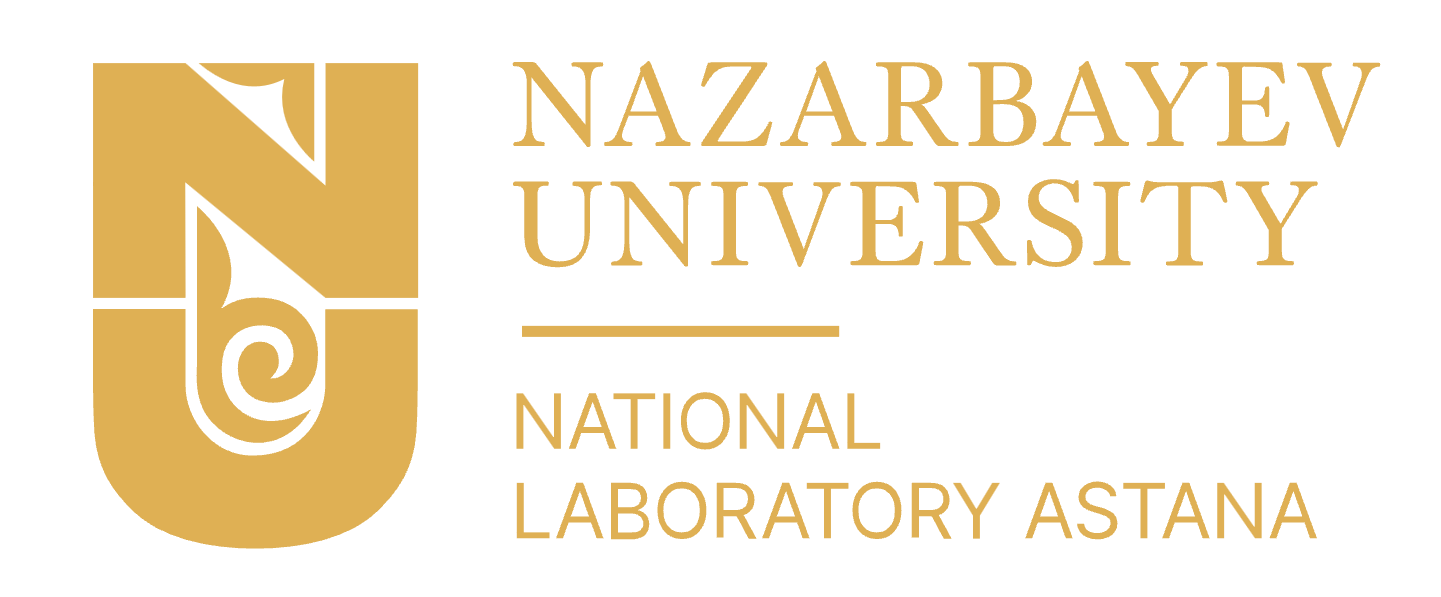Program-Targeted Funding 2023 - 2025

Kazakhstan holds an estimated 3–3.2 million tons of nickel and 147 thousand tons of cobalt, with key deposits in the Kostanay, Aktobe, East Kazakhstan, and Pavlodar regions. Despite significant reserves, most deposits are small and low-grade, with only 8 containing over 60,000 tons. Due to limited processing technologies, domestic development remains minimal, and nearly all nickel is exported. To build a competitive battery industry and boost economic independence, Kazakhstan must advance technologies for nickel extraction and processing, especially amid rising global demand.
- Analyze the composition of local nickel-containing raw materials.
- Develop the technology for the production of high-purity nickel sulfate from local natural resources for cathode materials used in lithium-ion batteries.
By the end of the program, we aim to achieve:
Battery-grade nickel sulfate production technology from local primary and secondary resources
- Optimized technology of sulfation-roasting water-leaching processing of local nickel sulfide ore;
- Method for producing of lithium iron phosphate precursor from the wastes of sulfation-roasting of nickel sulfide ore;
- Magnesium removal technology in nickel sulfide flotation concentrate by mechanochemical treatment.
- Selective purification of technogenic Ni-Co concentrate, originating from recycled Boeing aircraft components in Zhezkazgan, using precipitation and solvent extraction to obtain battery-grade nickel sulfate.
- to conduct a detailed study of Kazakhstan’s mineral deposits to assess their suitability for the extraction of battery-grade metals.
- to examine existing technologies for processing metal-containing raw materials to identify areas for innovation and improvement.
- to evaluate the strategic importance of nickel-based cathode materials in the global battery industry and identify Kazakhstan’s potential role in this value chain.
- to develop novel processing technologies for nickel-containing mineral resources, with an emphasis on the production of high-purity nickel sulfate.
- analysis of secondary resources, including high-grade technogenic Ni-Co concentrates derived from recycled aerospace components, to evaluate their potential for battery-grade nickel sulfate production
- to develop processes for the effective separation and purification of nickel sulfate suitable for battery applications.
- to optimize the sulfation-roasting process by determining the most effective temperature and time parameters to maximize nickel recovery
- to impleament a leaching process using distilled water followed by filtration, aiming for efficient metal dissolution.
- to develop an optimization model for the leaching process using relevant solution compositions (solid-liquid ratio) to enhance nickel recovery rates.
- to investigate the influence of aqueous leaching on the recovery of key metals, including nickel, cobalt, copper and removing unnecessary iron.
- to identify and test suitable neutralizing agents, considering optimal concentrations, temperature, pH values, reaction durations.
- to use Inductively Coupled Plasma Optical Emission Spectrometry (ICP-OES) to evaluate the efficiency of the neutralization process and determine the optimal pathway.
- to determine the most effective agents for mixed hydroxides precipitation, accounting for all potential reactions and outcomes.
- to enhance nickel recovery during precipitation by optimizing the quantity of reagents and the duration of the process
- to investigate the effectiveness of various solvent extractants (e.g., D2EHPA, Cyanex, Versatic acid) and define their working pH ranges, temperature parameters, concentration ratios, and other critical properties.
- to develop a robust solvent extraction protocol to selectively separate and recover valuable metals from solution
- to study different crystallization methods (evaporative, cooling, antisolvent) to determine the most appropriate technique for achieving desired purity and physical characteristics.
- to optimize the selected crystallization process to produce high-purity nickel sulfate suitable for use in cathode materials.




- Zhumabay BakenovProfessor, Principal InvestigatorORCID: 0000-0002-4335-8905
- Nurzhan UmirovLeading Researcher, NLAORCID: 0000-0002-4526-1955
- Almagul MentbayevaAssistant ProfessorORCID: 0000-0001-9132-1173
- Aishuak KonarovAssistant Professor, NLAORCID: 0000-0001-9352-8602
-
- Arailym NurpeissovaHead of the Laboratory, NLAORCID: 0000-0002-9657-2964
- Dauren BatyrbekulySenior Researcher, NLAORCID: 0000-0002-5172-5744
- Fail SultanovLeading Researcher, NLAORCID:0000-0002-7789-9398
- Batukhan TatykayevLeading Researcher, NLAORCID: 0000-0001-5071-1968
- Ayaulym BelgibayevaLeading Reseacher, NLAORCID: 0000-0002-3052-5241
- Botagoz AmanyazovaJunior Researcher, NLAORCID: 0009-0001-5321-2555
- Elmira NurgaziyevaSenior Researcher, NLAORCID: 0000-0001-8673-4977
- Zhandos ShalabayevLeading Researcher, NLAORCID: 0000-0003-3465-8241
- Nurzhan BaikalovResearch Assistant, NLAORCID: 0000-0001-7490-5804
- Moldir SailaukhanovaAssistant Researcher, NLAORCID: 0009-0001-1001-4428
- Saparbek TugelbayResearch Assistant, NLAORCID: 0000-0002-8781-9320
- Valeriya VolobuyevaJunior Researcher, NLAORCID: 0000-0002-1391-3904
- Nazerke ZhumashevaResearcher, NLAORCID: 0000-0001-5266-3429
- Akbar DauletbaySenior ResearcherORCID: 0000-0003-0157-1449
- Islam RakhimbekJunior ResearcherORCID: 0000-0003-0137-6061
- Farizat AidynResearcherORCID: 0009-0000-8824-2386
- Damira RakhmanJunior ResearcherORCID: 0009-0001-5912-0571
- Karina ZhumagaliResearcherORCID: 0009-0007-8524-8521
- Altynay ZhumabekovaAssistant ResearcherORCID: 0009-0006-4332-8868
- Aizhan KazymbetovaResearcherORCID: 0000-0001-7795-2980
- Assem ImangaliyevaResearcherORCID: 0000-0003-0482-9900
- Marzhan AliyakbarovaAssistant ResearcherORCID: 0009-0000-6668-2778
- Akbota KelgenbayevaResearcherORCID: 0009-0006-3493-4890
- Nazym MakanovaAssistant ResearcherORCID: 0009-0008-0208-278X
- Orazaly Sultan-AkhmetovResearcherORCID: 0009-0004-3823-4192
- Mukushev IlyasJunior ResearcherORCID: 0009-0008-8679-8274
- Mukagali YegamkulovJunior ResearcherORCID: 0000-0002-1133-3201
- E. Nurgaziyeva, A. Mentbayeva, S. Kalybekkyzy, Z. Bakenov, "Crosslinked Polytetrahydrofuran-based Solid-State Electrolytes with Improved Mechanical Stability and Electrochemical Performance", Applied Materials Today, 40 (2024) 102417. Quartile - Q1, procentile 91%, IF = 7.2. https://doi.org/10.1016/j.apmt.2024.102417
- N. Zhumasheva, M. Tursynbek, F. Sultanov, A. Mentbayeva, L.Kudreyeva, Z.Bakenov «Rice husk-based porous graphene-like carbon composite with nickel oxide nanoparticles for lithium-sulfur batteries» Journal NEWS OF THE NATIONAL ACADEMY OF SCIENCES OF THE REPUBLIC OF KAZAKHSTAN SERIES CHEMISTRY AND TECHNOLOGY, ISSN 2224–5286 Volume 4. Number 461 (2024), 58–74https://doi.org/10.32014/2024.2518-1491.251
- Graphene aerogels and composites based on them for rechargeable batteries: monograph / Sultanov F.R., Tatykaev B.B., Shalabaev Zh.S., Nurgazieva E.K., Mentbaeva A.A., Bakenov Zh.B. - Astana: NLA, 2024. - 150 p.
- Rakhman D, Batyrbekuly D, Myrzakhmetov B, Zhumagali K, Issabek K, Sultan-Akhmetov O, Umirov N, Konarov A, Bakenov Z. Polyacrylamide-based hydrogel electrolyte for modulating water activity in aqueous hybrid batteries. RSC advances. 2024;14(54):40222-33.https://doi.org/10.1039/D4RA07551J
- Kydyrbayeva, U., Baltash, Y., Mukhan, O., Nurpeissova, A., Kim, S. S., Bakenov, Z., & Mukanova, A. (2024). The buckwheat-derived hard carbon as an anode material for sodium-ion energy storage system. Journal of Energy Storage, 96, 112629. https://doi.org/10.1016/j.est.2024.112629
- Belgibayeva, A., Turarova, G., Dangaliyeva, A., Sultanov, F., Nurpeissova, A., Mukanova, A., & Bakenov, Z. (2024). Polysulfide-mediating properties of nickel phosphide carbon composite nanofibers as free-standing interlayers for lithium–sulfur batteries. RSC advances, 14(49), 36593-36601. https://doi.org/10.1016/j.jpowsour.2024.234933
- Nduka, E. I., Assan, N., Yegamkulov, M., Mukanova, A., & Bakenov, Z. (2024). Effect of magnetic field on the rate performance of a Fe 2 O 3/LiFePO 4 composite cathode for Li-ion batteries. RSC advances, 14(48), 36005-36015. https://doi.org/10.1039/d4ra06707j
- Uali, A., Kazymbetova, A., Belgibayeva, A., Nurpeissova, A., Bakenov, Z., & Mukanova, A. (2025). Industrial sulfur separation and purification: Paving the way to energy applications. Chemical Engineering Journal, 161574. https://doi.org/10.1016/j.cej.2025.161574
- Mashekova, A., Umirzakov, A., Yegamkulov, M., Aliyakbarova, M., Uzakbaiuly, B., Nurpeissova, A., ... & Mukanova, A. (2025). Separator-free Li–S thin-film battery with spin-coated S/CNT/SP cathode and PEO/PVDF/LTFSI/LLZO composite electrolyte. RSC advances, 15(15), 11537-11548. https://doi.org/10.1039/D5RA01602A
- Tleukenov, Y. T., Yegamkulov, M., Raiymbekov, Y., Nurpeissova, A., Bakenov, Z., & Mukanova, A. (2024). RF Sputtered In-plane NiO-based Lithium-metal Microbattery. Eurasian Journal of Physics and Functional Materials, 8(3), 111-121. https://doi.org/10.69912/2616-8537.1226
- Serikkazyyeva, А., Yegamkulov, M., Raiymbekov, Y., Uzakbaiuly, B., Bakenov, Z., & Mukanova, A. (2025). Morphological Investigation of Li Thin Film Deposited on LiPON Solid Electrolyte and the Influence of Interlayers on It. Bulletin of the Karaganda University" Physics Series", 11730(1), 20-28. https://doi.org/10.31489/2025PH1/20-2.
- Issatayev, N., Tassybay, K., Wu, N.-L., Nurpeissova, A., Bakenov, Z., & Kalimuldina, G. (2024). LiF modified hard carbon from date seeds as an anode material for enhanced low-temperature lithium-ion batteries. Carbon, 229, 119479. https://doi.org/10.1016/j.carbon.2024.119479 (Q1, IF=10.5, 96%)
- Mukushev, I., Tyan, Y., Kalimuldina, G., Mukanova, A., Jakupova, Z., Kim, S.-S., Bakenov, Z., & Nurpeissova, A. (2025). High-performance Na₃V₂(PO₄)₃/C cathode for efficient low-temperature lithium-ion batteries. NPG Asia Materials, 17, Article 10. https://doi.org/10.1038/s41427-025-00591-x (Q1, IF=8.6, 85%)
- Belgibayeva, A., Kydyrbayeva, U., Rakhatkyzy, M., Kalimuldina, G., Nurpeissova, A., & Bakenov, Z. (2025). Low-temperature performance of Zn-modified graphite and hard carbon as anodes for lithium-ion batteries. Solid State Sciences, 164, 107923. https://doi.org/10.1016/j.solidstatesciences.2025.107923 (Q2, IF= 3.4, 80
- Issatayev, N., Abdumutaliyeva, D., Tashenov, Y., Yeskozha, D., Seipiyev, A., Bakenov, Z., & Nurpeissova, A. (2024). Three-dimensional carbon coated and high mass-loaded NiO@Ni foam anode with high specific capacity for lithium ion batteries. RSC Advances, 14(54), 40069–40076. https://doi.org/10.1039/D4RA07119K (Q2, IF = 3.9, percentile 79 (Scopus)
- Bakenov Z.B., Umirov N.B., Volobueva V.V., Tatykaev B.B., Amanyazova B.T., Tugelbay S.B., Kurmanbaeva I.A.. «National Laboratory Astana» Private Institution, Kazakhstan. Method for Producing of Lithium Iron Phosphate Precursor Using Copper-Nickel Sulfide Ores. No 10134 from 31.01.2025
- Bakenov Z.B., Umirov N.B., Tatykaev B.B., Amanyazova B.T., Tugelbay S.B., Kurmanbaeva I.A..«National Laboratory Astana» Private Institution, Kazakhstan. Method of extraction of nickel and cobalt from copper-nickel sulfide ore concentrate. No 9525 from 06.09.2024
- Bakenov Z.B., Umirov N.B., Tatykaev B.B., Amanyazova B.T., Tugelbay S.B., Kurmanbaeva I.A., Kylyshbayeva A.S., Sailaukhanova M.A.. «National Laboratory Astana» Private Institution, Kazakhstan. Method for nickel and cobalt recovery from nickel sulfide concentrate by mechanical activation. No 10219 from 21.02.2025.
- Patent for utility model «Method of obtaining elemental sulfur» Authors: Assem Imangaliyeva, Amangeldi Abilkhairov, Aliya Mukanova, Zhumabay Bakenov. No 10051 от 10.01.2025
- Patent for utility model «Method for producing fine sulfur». Authors: Assem Imangaliyeva, Amangeldi Abilkhairov, Aliya Mukanova, Zhumabay Bakenov. No 9989 от 27.12.2024
The project introduces innovative, low-waste processing methods and promotes the recovery and reuse of by-products, minimizing environmental damage. Mechanochemical methods and waste-derived precursors align with principles of green chemistry and sustainable industrial development.

